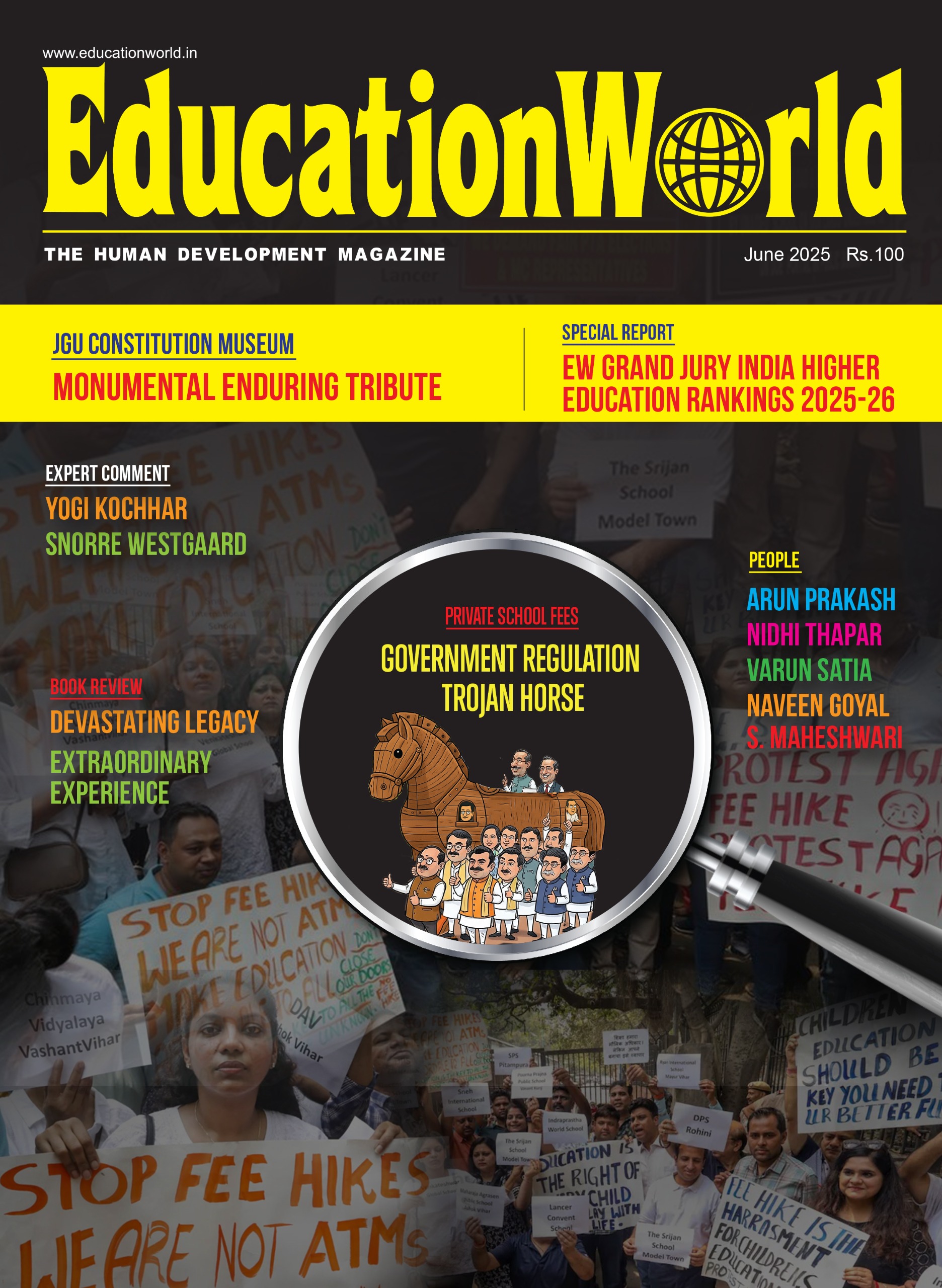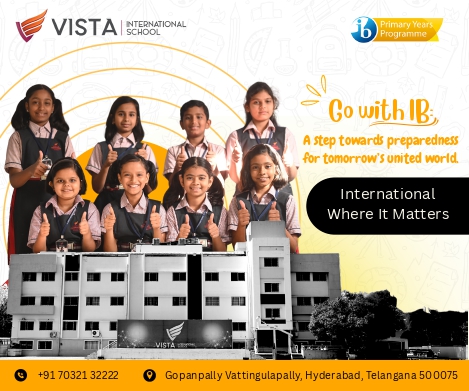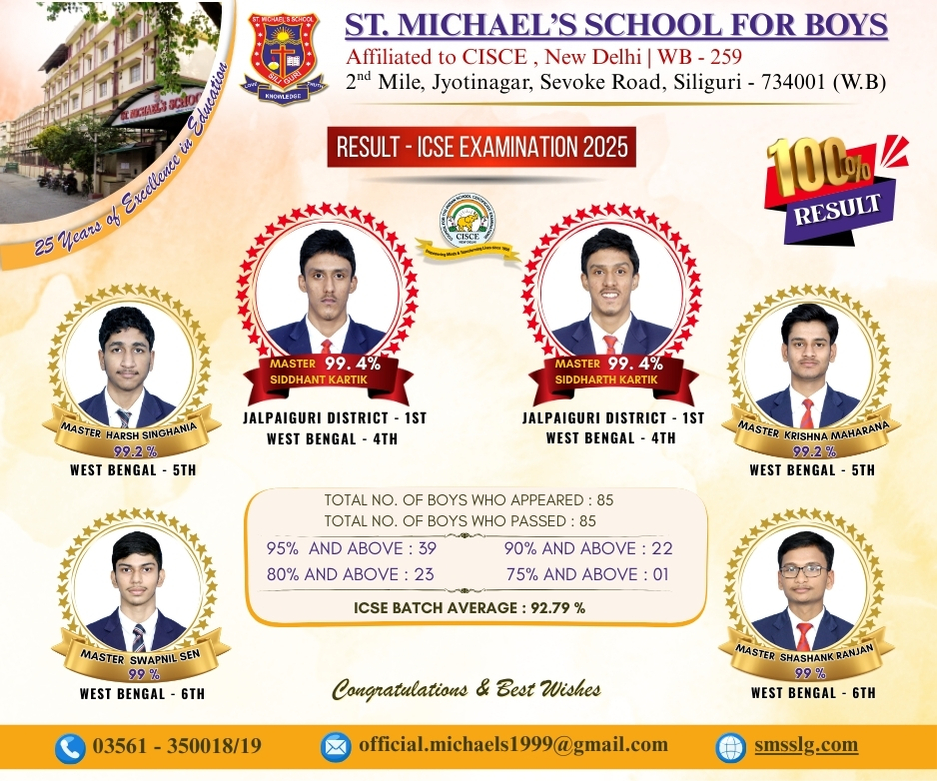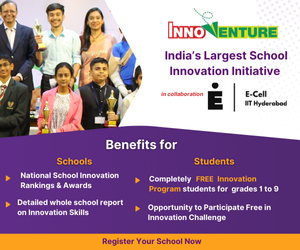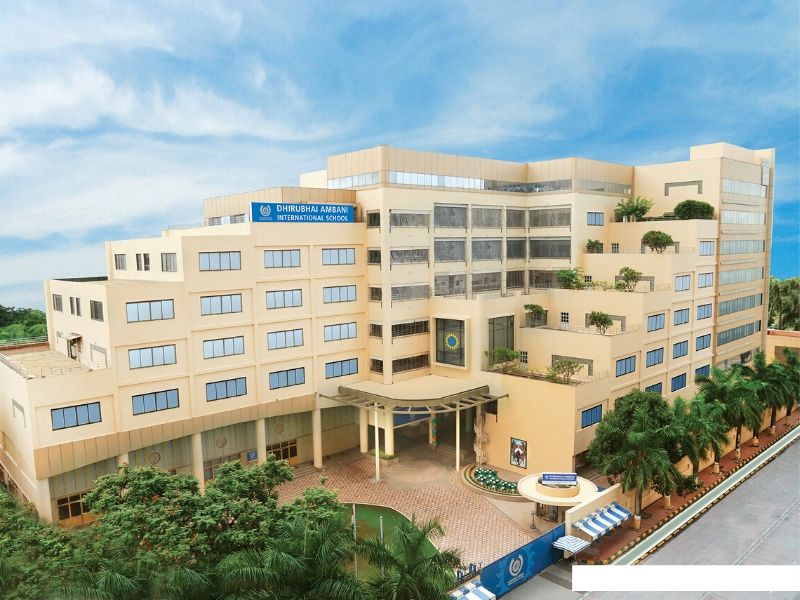25 Principals Redefining Indian Education (contd.)Continuously learning principalAnu Dhingra heads Delhi Public School, Lucknow, an institution which admits only 2 percent of the children who apply for admission. But when Dhingra joined in 1999, this then one-year-old CBSE affiliated school had only 450 students. Since then the enrollment has swelled to 1,700. The secret of DPS Lucknow? “A reputation for simple hard work,” says Dhingra side-stepping questions about the brand image of DPS. Nevertheless it‚s patently obvious that the need to keep up with the 130 DPS schools countrywide inspires this English literature alumna of Punjab University, who earlier served in the Salwan Public School and several Army Public schools. “To aim just to be the best school in Lucknow, is limiting. We are aiming to become the best DPS school in India,” she says.The school already chalked up an impressive first in terms of using Oracle software as an educative tool. Moreover in-service training for teachers is given top priority. Teacher workshops on leadership, teaching practices and evaluation systems are continuous year round. Classroom pedagogies favour hands-on learning with students trooping off to golf courses, flour mills and dairy farms to experience and observe. English language learning is another focus area and a well-equipped language lab with audio visual aids and an English club is a great draw with students.In keeping with the DPS tradition, all class X students passed in the first division last year, with a confident first batch ready to write the class XII exam this year. DPS Lucknow has done well in extra-curricular activities as well. “If we participate in a competition, we usually win,” says Dhingra of her students, who have brought back the state level taekwondo championships and reached the semi finals of the national vocals competition Saregama. Guided by a social conscience, Dhingra has also set up a Shiksha Kendra on the school campus which provides free-of-charge education to underprivileged children. More than 50 students, aged four-ten years attend two-and-a-half-hour classes daily and are provided schoolbooks and uniforms by DPS, Lucknow.Though pre-occupied with school administration, Dhingra says interaction with young children keeps her refreshed. “Being a teacher is all about being a learner and I believe one can learn even from four-year-olds,” she says. Obviously she is putting these lessons to good use . Equal education championIn 2003 when Kalpana Singh met Shukla Bose, founder of Bangalore-based NGO Parikrma Humanity Foundation (PHF), her life changed dramatically. Bose was on the threshold of starting the first free Parikrma School for slum children and wanted Singh to take charge as principal. In what Singh describes as an “instant decision”, she gave up her job as principal of Vidya Dayini Model School, Hyderabad and signed up with PHF. Since then from two schools with an enrollment of 320 students, PHF has promoted an additional two schools with an aggregate enrollment of 730 children from slums across the garden city. The distinguishing characteristic of PHF schools is that they provide free English-medium, CISCE syllabus education to children of rock-bottom poor slum dwellers.As the founder principal of the Parikrma schools, Singh has been instrumental in devising the innovative teaching-learning model which enables and motivates first generation learners from economically backward families to not only learn the three R‚s, but to develop into contributing members of society. “The mission of Parikrma is to release the potential of socio-economically deprived children by providing them equal opportunity i.e quality English medium education, which is seldom available to children of the poor. But our education model ‚ Circle of Life ‚ comprises more than a quality academic curriculum. It includes nutrition, healthcare and community development programmes,” says Singh, an alumna of Osmania University who is head of academics of all the four Parikrma schools. Since almost all children are first generation learners, upon enrollment they are put through a fast track three-month English speaking and writing programme. The curriculum is largely experiential and is supplemented by life skills learning, including toilet and personal hygiene training. Quite evidently this unconventional model which offers children of poor slum dwellers the equivalent of private middle class education is beginning to be appreciated. In 2004 Parikrma was conferred the prestigious Derozio Award for Excellence in Human Enrichment and Education by CISCE ‚ India‚s most preferred school-leaving examinations board ‚ which carries a cash prize of Rs.100,000.Although within a short span of four years the education model crafted for poor urban children has received widespread acclamation, the Parikrma team is not content to rest on its laurels. The foundation‚s future plans include multiplication of Parikrma learning centres so that more poor children can access equal education across India, and setting up a teacher training and pedagogical research hub in Bangalore . Sterling reputation builder Kalpalatha Mohan was among the first teachers recruited by the Sri Sankara Vidyashram Matriculation Higher Secondary School (SSVM), Tiruvanmiyur (Tamil Nadu) which admitted its first batch of students in 1989. Since then she has risen steadily within the faculty to the position of vice-principal in 1999 and finally principal in 2000. During her 17-year tenure, enrollment in the school, promoted by the Indian Education Trust, has grown from 300 to 1,700 students instructed by 74 teachers. Affiliated with the Directorate of Matriculation Schools in Tamil Nadu, SSVM has acquired a sterling reputation for academic excellence and personality development of its students.”Sri Sankara Vidyashram has a justified reputation for transforming average students into academic achievers even while focusing on extra-curricular education to tap creativity in children. Moreover spiritual development is also woven into the school curriculum,” says Mohan, an English literature and education alumna of Madras and Annamalai universities.Mohan takes particular pride that under her stewardship Sri Sankara Vidyashram has an extensive menu of extra-curricular and club activities which have enabled students to excel in non-academic fields. For instance the school‚s Parampara Heritage Club has been declared the Best Heritage Club from among 500 such clubs countrywide by Intach (Indian National Trust for Art and Cultural Heritage). Moreover the school was also conferred the British Council International School Award in 2006 for incorporating international dimensions in its curriculum. Mohan‚s future plans for Sri Shankara Vidyashram accord special emphasis to information technology in education. “Wherever possible we induct technology in teaching-learning. We are now adding a sub-junior computer lab with 60 PCs to the existing junior and senior computer labs to accelerate technology- based learning. Moreover students of classes IV-VI are being trained to take the Cambridge Young Learners test, and formal soft skills development programmes are being conducted for all students,” says Mohan . Quest for excellence”Our mission is to produce students ready to confront the challenges of the digital age, and develop leaders who can take on the world,” says Uma Sarathchandran, principal of the prestigious Maharashtra state (SSC) board affiliated Symbiosis School, Pune (estb.1983) which has an aggregate enrollment of 2,130 students of both sexes.Promoted by Symbiosis Deemed University founder Dr. S.B. Majumdar, this co-ed school has come a long way since it admitted its first batch of 650 students. Recently in response to popular demand, a pre-school and junior kindergarten section with an aggregate enrollment of 545 boys and girls was inaugurated.”I believe that academic excellence is a consequence of the teacher‚s role in the character and personality development of students,” says Sarathchandran. “It is important for teachers to touch hearts while sharpening the minds of students to enable them to face life‚s inevitable challenges with courage of conviction and human values.”With teachers required to play a pivotal role in providing holistic education to the school‚s students, it‚s hardly surprising that teacher training and development is accorded prime importance in Symbiosis School. Teachers are sent for seminars and workshops on a regular basis to enhance their teaching skills, update their knowledge of subjects and learn about pedagogy innovations and best practices. Moreover the use of ICT (information communication techn-ology) in classrooms is actively encouraged. “I never miss an opportunity to introduce new technologies in our classrooms. Together with our teachers, I participate in seminars, conferences, symposiums and workshops on education to continuously raise teaching-learning standards in our school,” she says.Sarathchandran‚s future plans for the Symbiosis School include the promotion of a junior college (Plus Two) of science, arts and commerce as also to construct a state-of-the-art residential complex for boarders and children of NRIs. “Our watchword is to expand capacity while improving the quality of education and learning outcomes in the continuous search for academic excellence,” she says . Holistic education proponentA hitherto low-profile institution which has impacted itself upon the public consciousness as the most favoured co-ed international school in north-east India which boasts blue-chip all boys‚ schools such St. Paul‚s and St. Joseph‚s (Darjeeling), is the Himali Boarding School, Kurseong (HBS, estb. 1978) . Affiliated with the Delhi-based Council for Indian School Certificate Examinations (CISCE) and the Cambridge International Examinations (CIE), UK, HBS which has 950 students including 475 boarders on it rolls is the first CIE examinations centre and the only school in the north-east to offer CIE‚s primary years programme. Little wonder that it has attracted a cohort of 70 foreign students from several countries including South Korea, Thailand, Nepal, Bhutan and Bangladesh apart from children of NRIs in western countries. “In HBS our 120-strong faculty is very aware that following massive changes in knowledge content in recent times, schools need to empower students with the critical skills to access and use knowledge. Concurrently our faculty is conscious that education must also help develop an internal compass to influence students into making considered, rational choices. Moreover we believe that quality education must address emotional, social and creative development issues as well,” says Gayatri Rai an English and education postgraduate of North Bengal University who was appointed principal of HBS in 2001 after she taught for 22 years in the Don Bosco School, Siliguri. The rigorous IT-enabled curriculums of CISCE and CIE (at the option of students) apart, in consonance with its holistic education philosophy, HBS offers varied co-curricular and extra-curricular options to its students. Among them Indian classical dance, yoga and aerobics classes and active quiz, elocution and debating societies. Although the steep hillsides upon which this 28-year-old school is constructed preclude extensive field games facilities, HBS boasts high quality football, basketball, volleyball, table tennis and badminton teams of all ages. Almost three decades on, during which this pioneer co-ed school has established an excellent reputation in the north-east and neighbouring countries for the high quality, outward-looking holistic education it provides, the HBS management has an ambitious development plan. “Under construction is a new hostel for girl students, and a new building for students enrolled in CIE‚s primary years programme. Simultaneously 20 teachers are undergoing intensive Cambridge Teaching Diploma training under the supervision of our director Robbi Subba, who is a certified CIE master trainer. We are determined to continuously upgrade infrastructure and teaching-learning standards in HBS,” says Rai . Successful career switchA professional chartered accountant who ran a consultancy firm for over 15 years in Dehra Dun, Anurag Sangal made a life-changing career switch in 2001 when he signed up as an economics teacher to higher secondary IB (International Baccalaureate) diploma students at the new age Chinmaya International Residential School (CIRS), Coimbatore. A year later, Sangal was appointed principal of this young international school promoted in 1996 by the Chinmaya Mission Trust, founded by Swami Chinmayananda (1916-1993). Since then in his five-year tenure as principal, Sangal has bolstered student enrollment to 450 including 65 from 17 countries across the world, instructed by a faculty of 47. Sprawled across 100 acres of picture-postcard countryside beyond the textile city of Coimbatore, CIRS is a wholly residential CBSE affiliated co-education school which also offers the IB diploma at the Plus Two stage. “The mission of CIRS is to provide education which blends India‚s culture and rich heritage with the technology of the West. To this end we have formulated the Chinmaya Vision Programme, an education model which integrates the best in our culture and philosophy with academic excellence. Indian culture, patriotism and inculcation of values are as important in CIRS as academic knowledge,” says Sangal. Obviously this admixture works. During his tenure, CIRS students have consistently recorded higher grades in CBSE‚s class X and XII examinations as well as in the IB exam.An alumnus of St. Joseph‚s School, Dehra Dun and Meerut College, Sangal has also successfully supervised the school‚s second phase infrastructure upgradation drive. Construction of a new academic block, dormitories and staff quarters is over and the school is ready to welcome an additional 100 students. “In the next two years we will have a full house with 550 students. However we will ensure that the class strength remains 25 and the teacher-pupil ratio is 1:9. Moreover we plan to upgrade our sports facilities to international standards,” he says. Quite clearly, Sangal‚s mission is to attain full capacity without compromising infrastructure or academic standards, and the betting is he‚ll succeed.Lofty new project leader”The Riverdale International Residential School (RIRS) addresses the basic questions of how human potential can be actualised and how students can be prepared to confront life‚s challenges with equanimity and assume leadership roles in society,” says Dr. Vasudevan Nair, principal of RIRS (estb. 2002) on the outskirts of Pune.Trained as a secondary school teacher in UK (1958-1960), Nair during his seven-year career in Malaysia, Thailand and Seychelles Islands as a teacher, also obtained a Masters and Ph D in education from the University of Massachusetts. Moreover prior to signing up with RIRS five years ago, Nair served as principal and director of the New Era High School, Panchgani for 17 years, during which period the social service component of the school‚s curriculum was spun off into the New Era Development Institute.Riverdale International is spread over 49 acres atop a hill, overlooking a valley through which runs the river Mula. Currently this co-ed school has an aggregate enrollment of 250 students instructed by 29 teachers. “The construction of RIRS in this rarefied atmosphere is itself a tremendous achievement as it required building a road up a steep hill, and providing for dedicated water supply and electricity,” says Nair. The rigorous curriculums of the Delhi-based CISCE and Cambridge International Examinations apart, the school offers extensive facilities for field games, athletics, tennis, swimming, horse riding and basketball.”The vision of our promoter Mr. Farhang Azar which I share, is to create a stress-free education environment which celebrates childhood and frees children from the anxieties and difficulties that a boarding school student faces when away from home. That‚s our objective in RIRS,” says Nair . Dilip Thakore & Summiya Yasmeen (Bangalore); Gaver Chatterjee (Mumbai); Hemalatha Raghupathi (Chennai); Michael Gonsalves (Pune); Vidya Pandit (Lucknow) & Autar Nehru (Delhi)
Cover Story (contd.)
EducationWorld March 07 | EducationWorld














